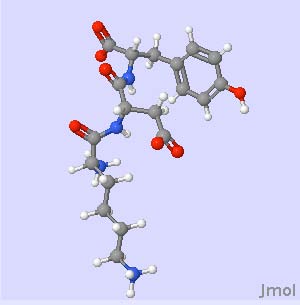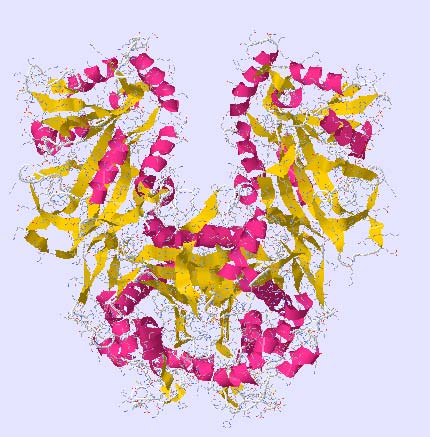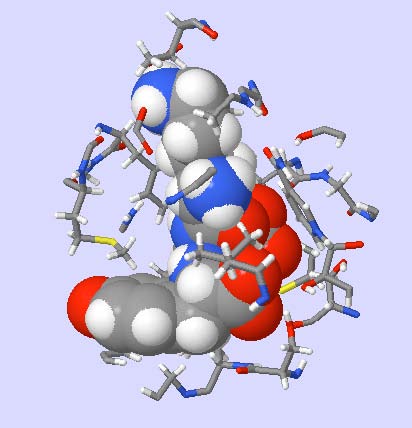| << Chapter < Page | Chapter >> Page > |



We found that the display of the highest docking score achieved by a School or Open Day group was a valuable incentive to try and develop a molecule with a higher score. Tools to manage a group collectively were very useful in motivating and providing feedback to a class.
New chemical services became available as the project moved forward and in its new incarnation it makes use of one of the available 2D molecular sketch packages ( Marvin from ChemAxon ) and the 3D optimization within this package. This reduced the number of bespoke services which we needed to provide, but removed some of the filtering for sensible molecules that we had previously put in place. We supplied additional interfaces to be able to automate the molecular design, and the SMILES input has proved very useful for more advanced teaching applications with undergraduates. It is now easier to bring many structures from a paper, for example, into the eMalaria system and to manipulate them as we did in automatically constructing the SMILE sequences for all the possible tri-peptides from the 20 most common naturally occurring amino-acids.
As well as serving as a general reminder of 3D stereochemistry and examples of using SMILE strings, we made extensive use of the eMalaria system in the final year undergraduate course on Chemical informatics for which the students, as part of their project work, were required to build a QSAR (Quantitative Structure Activity Relationship) model to model docking score based on simple descriptors that were calculated using web based freely accessible programs (e.g. molecular mass, volume, LogP). More recently the task set the undergraduate class was to model real experimental data on inhibitors of Plasmemsin taken from the literature (K. Ersmark etal, J. Med Chem. 2005, 48 , 6090-6106), using the eMalaria docking scores as one of the possible descriptors in the QSAR model of inhibitor activity.
The eMalaria approach to outreach and teaching was formally evaluated as part of the eBank project with a review of the material and interviews with students who had used eMalaria as part of their course. Typical teaching scenarios for using eBank and eMalaria included getting students to retrieve small molecules from the eBank and eCrystals systems and then putting them into the eMalaria site in order to undertake a range of manipulations and investigations. Such a linkage between eBank, eCrystals and eMalaria provides a demonstration of a means of explicitly integrating research activities with learning and teaching practice. The course was designed to progressively build up complexity and use of real and authentic data, clearly linked and of relevance to work-based learning, which was timely, as these students had just completed their six-month work placement. Very positive outcomes were noted and the lesson of linking research and teaching is exploited in the outreach context as well as in university teaching.
Returning to our original aims of outreach to the school community, eMalaria now has a presence on the University of Southampton’s island in Second Life. A ‘fruit machine’ allows a visitor to the island to select three amino acids to make a tri-peptide. The molecule is rendered as a floating 3D image and the docking score against the DHFR enzyme target is shown. In the future a visitor will be able to design more general molecules and obtain a docking score by launching an eMalaria calculation against a selected target.
The eMalaria system is actively being used in undergraduate teaching but currently less so for outreach. We are planning to increase the support for the system and to make it available again regionally and nationally with the addition of more computational power. We are exploring distributed computing solutions with other systems such as BOINC to see if they can provide a more appropriate solution for some of the longer calculations that could be useful in advanced teaching. This project has shown the wider impact of e-Research through its involvement of young students in the process of drug design. While learning how to design molecules using computer-enabled methods, students also provided research results which have fed into university researchers’ work on finding anti-malarial drugs. Projects such as this one can not only lead to new discoveries but also inspire students to become enthusiastic about science early on.
Thanks to EPSRC and JISC for the financial contributions, CCDC for making the Gold software available, and Robert Gledhill, Sarah Kent, Andrew Milsted, Brian Hudson, Steve Wilson, Simon Coles and Jon Essex for their contributions to the project.
The eMalaria website (External Link)
http://www.rsc.org/chemistryworld/News/2005/July/07070501.asp
Frey, Jeremy G., Gledhill, Robert J., Milsted, Andrew, Kent, Sarah, Essex, Jon W. and Richards, G.W. (2006) A computer-aided drug discovery system for chemistry teaching. In, American Chemical Society 232 National Meeting, San Francisco, USA, 10-14 Sep 2006. USA, American Chemical Society.
Frey, Jeremy G., Gledhill, Robert, Kent, Sarah, Hudson, Brian and Essex, Jon (2006) Schools Malaria Project. In, Proceedings of the UK e-Science All Hands Meeting 2005. UK, Engineering and Physical Science Research Council. (UK e-Science All Hands Meeting 2005).
Geldhill, Robert, Kent, Sarah, Milsted, Andrew, Chapman, Richard, Essex, Jonathan. W. and Frey, Jeremy. G. (2008) e-Malaria: the schools Malaria project. Concurrency and Computation: Practice&Experience, 20, (3), 225-238. (doi:10.1002/cpe.1193)
Gledhill, Robert, Kent, Sarah, Hudson, Brian, Richards, W. Graham, Essex, Jonathan W. and Frey, Jeremy G. (2006) A computer-aided drug discovery system for chemistry teaching. Journal of Chemical Information and Modeling, 46, (3), 960-970. (doi:10.1021/ci050383q)
Woodgate, Dawn and Fraser DanaÎ S., eScience and Education 2005: A Review
http://www.jisc.ac.uk/media/documents/programmes/eresearch/escienceineducation_study_final.pdf

Notification Switch
Would you like to follow the 'Research in a connected world' conversation and receive update notifications?